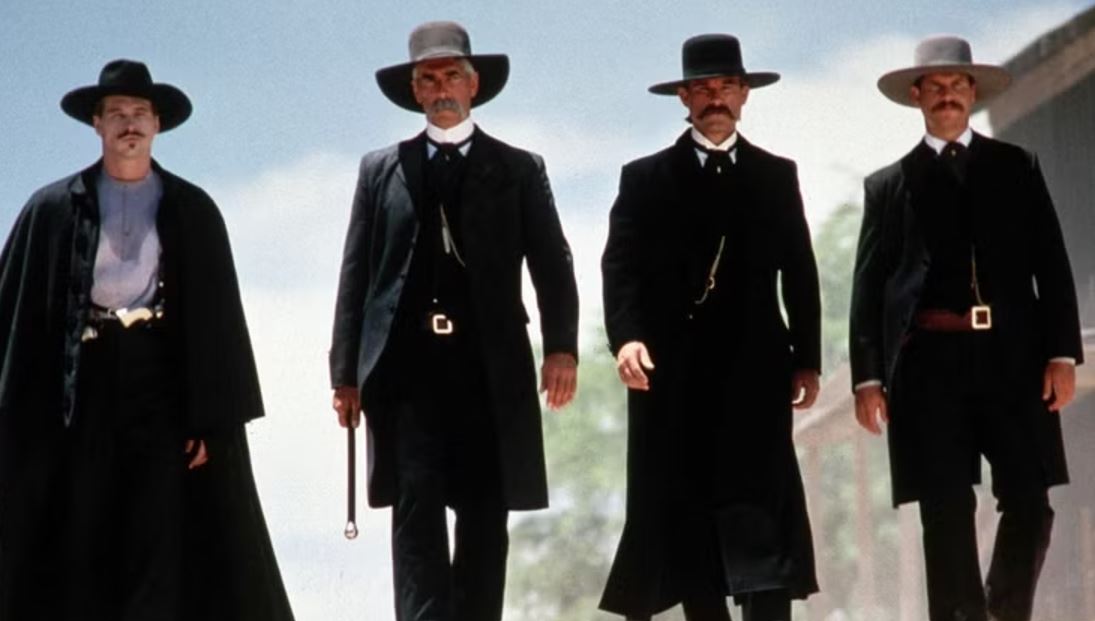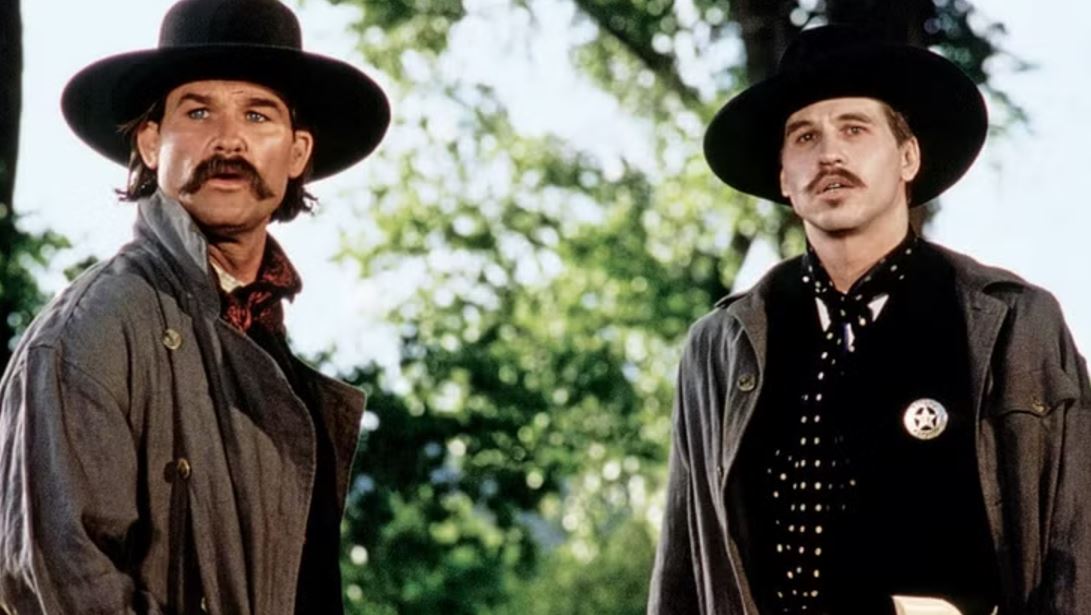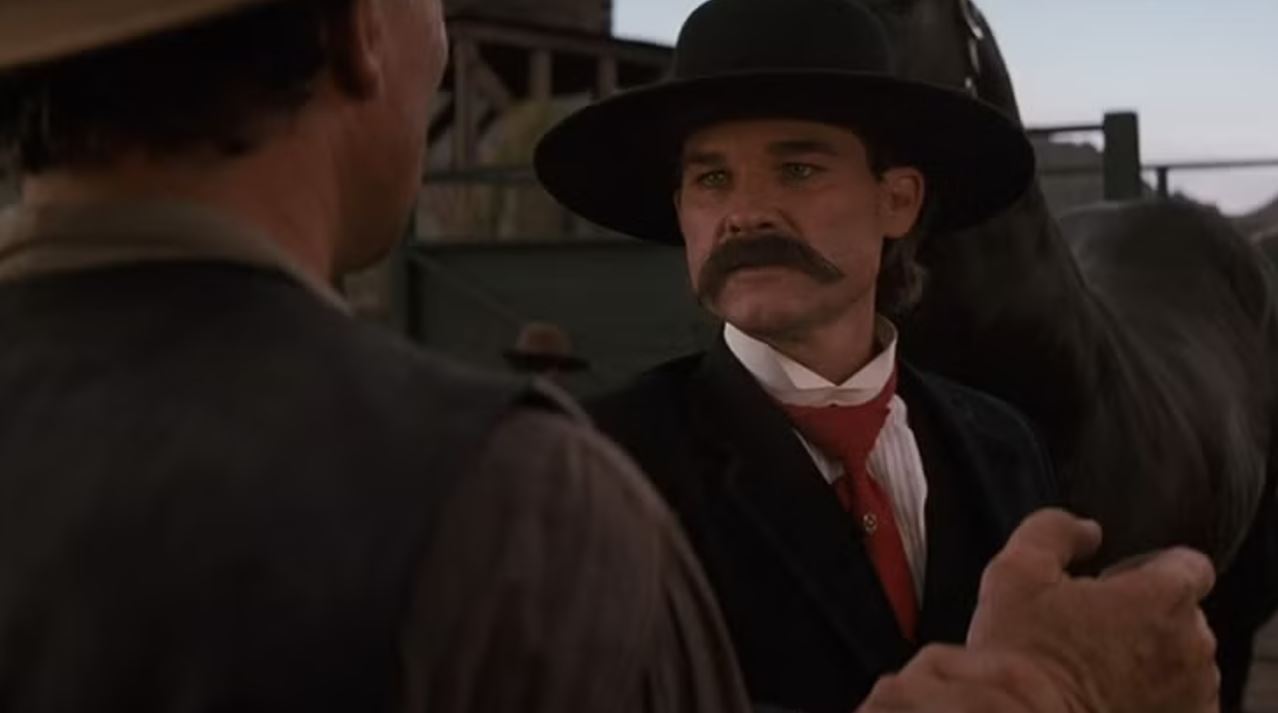There are very few Westerns that have the capacity to match the sheer quality and scale of 1993’s Tombstone. The picture is a brilliant work of art that pays tribute to both Old West history and traditional horse operas in a way that you’ll be hard-pressed to find replicated. But most of the credit goes to actor Kurt Russell, who was really the driving force of the film. Even from his very first scene as Wyatt Earp, there’s something special about Russell’s performance here, and though he’s made some powerful Westerns since, there’s no denying that Tombstone is his best. Yes, that opening scene with the Cowboys introduces us to the conflict of this picture, but it’s Wyatt Earp’s introduction that ensures us that everything’s going to be okay, even when it isn’t.
Wyatt Earp’s Intro in ‘Tombstone’ Is Simple Yet Effective

It’s a small thing, but Tombstone’s introduction to Kurt Russell’s most famous Western hero set the stage for the rest of the film. After seeing a man abuse his horse after it fails to respond to his command, Wyatt quietly walks over and wacks the cowboy with the very same whip. “Hurts, don’t it?” he says, with a pure mixture of calmness and intensity. “Now let go of that stud, and go on about your business.” It’s only one hit, but it’s seriously effective. With it, he asserts his position as not only the film’s hero, but he foreshadows the way he’ll respond to the Cowboys gang later on. Soon after, he’s approached by the U.S. Marshals for a potential job, only for Wyatt to shoo them away, noting that since he already has a guilty conscience, he ought to make enough money in Tombstone to go with it.
Later on in the film, Wyatt takes the reins of Tombstone from the notorious gang and beats them with their own tactics (even going so far as to ally himself with defecting members of the Cowboys). It’s a small thing, but with this one scene, Tombstone introduces one of the coolest protagonists in all horse operas. It’s from here that we watch Wyatt slowly shift from being impartial to the law and his part in keeping it to becoming one of the principal forces in defending it. Sure, the opening sequence with Michael Biehn’s notorious outlaw Johnny Ringo and his band of Cowboys is more powerful, but this moment with Russell’s Earp is incredibly effective in presenting the hero of the story. If this is how he stands up for his horse, one can only imagine how he’ll stand up for the rest of Tombstone.
Kurt Russell Was Instrumental To ‘Tombstone’s Success

“If I had not been around, Tombstone wouldn’t have, either,” Kurt Russell told Rolling Stone in December 2023. Frankly, that’s all Kurt Russell seems to say publicly concerning his part as Tombstone’s director after the first director, screenwriter Kevin Jarre, was fired early on in production. To this day, Val Kilmer swears that Russell is directly responsible for making Tombstone happen, and once noted that, Kurt is “solely responsible” for Tombstone’s success. According to Kilmer, Russell worked closely with replacement director George P. Cosmatos to pull the entire production together. “I watched Kurt sacrifice his own role and energy to devote himself as a storyteller,” Kilmer noted, “even going so far as to draw up shot lists to help our replacement director, George Cosmatos, who came in with only two days prep.”
Kilmer may have given the breakout performance in Tombstone, but Russell is undoubtedly the film’s star. To this day, this 1993 Western is considered not only one of the genre’s best, but one of the best motion pictures of the late 20th century. Only six months later, the Kevin Costner-led Wyatt Earp hit theaters, but it was nowhere near as complex or successful as Tombstone. From that first moment we watched Wyatt Earp defend his horse, we knew that he was the right type of hero to see things through to the end, and it’s stuck with us ever since.
